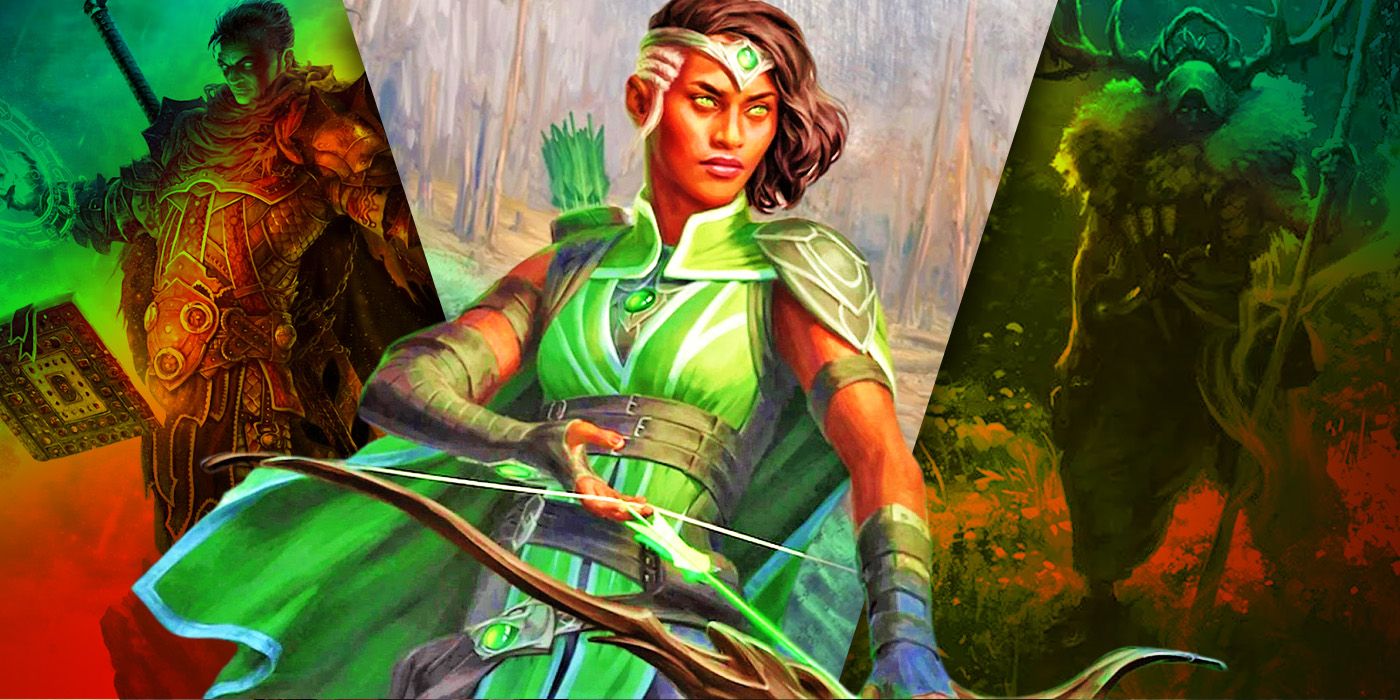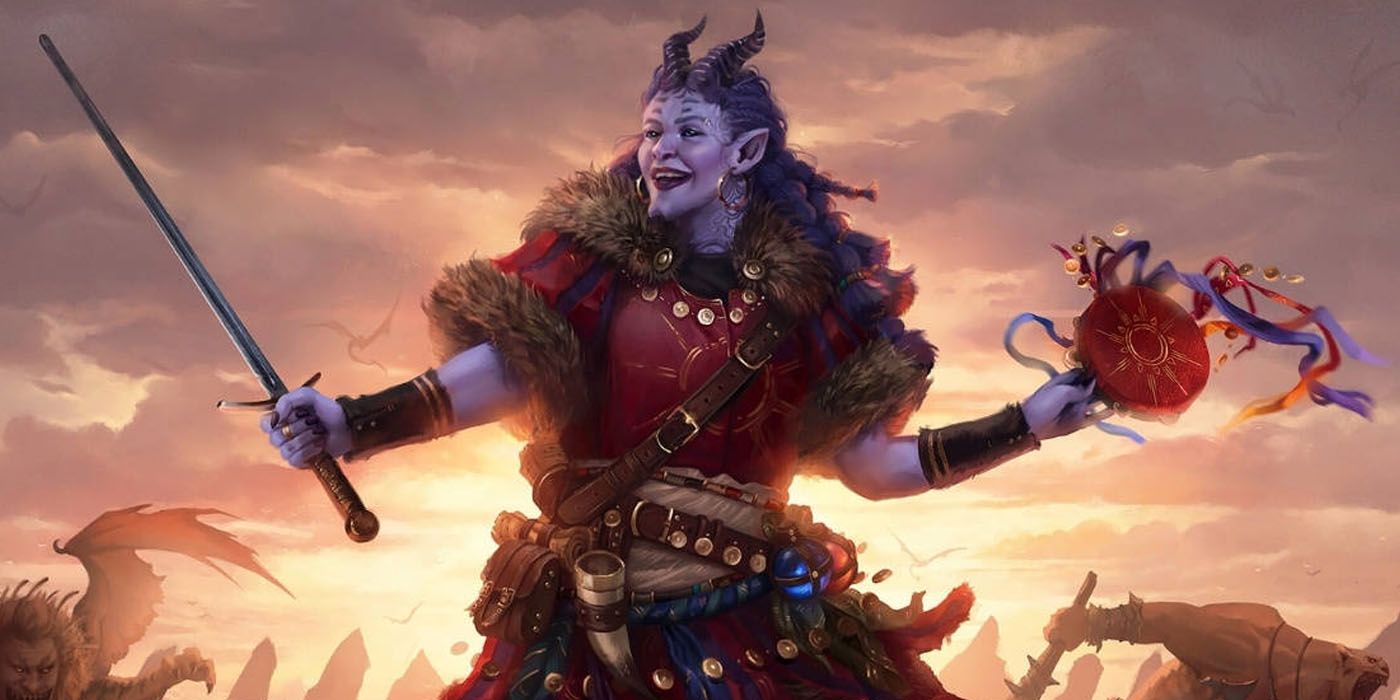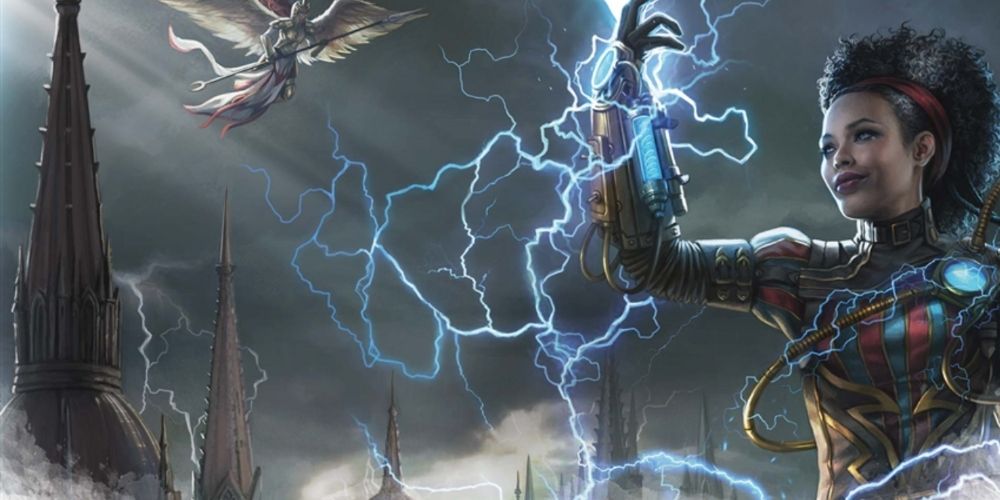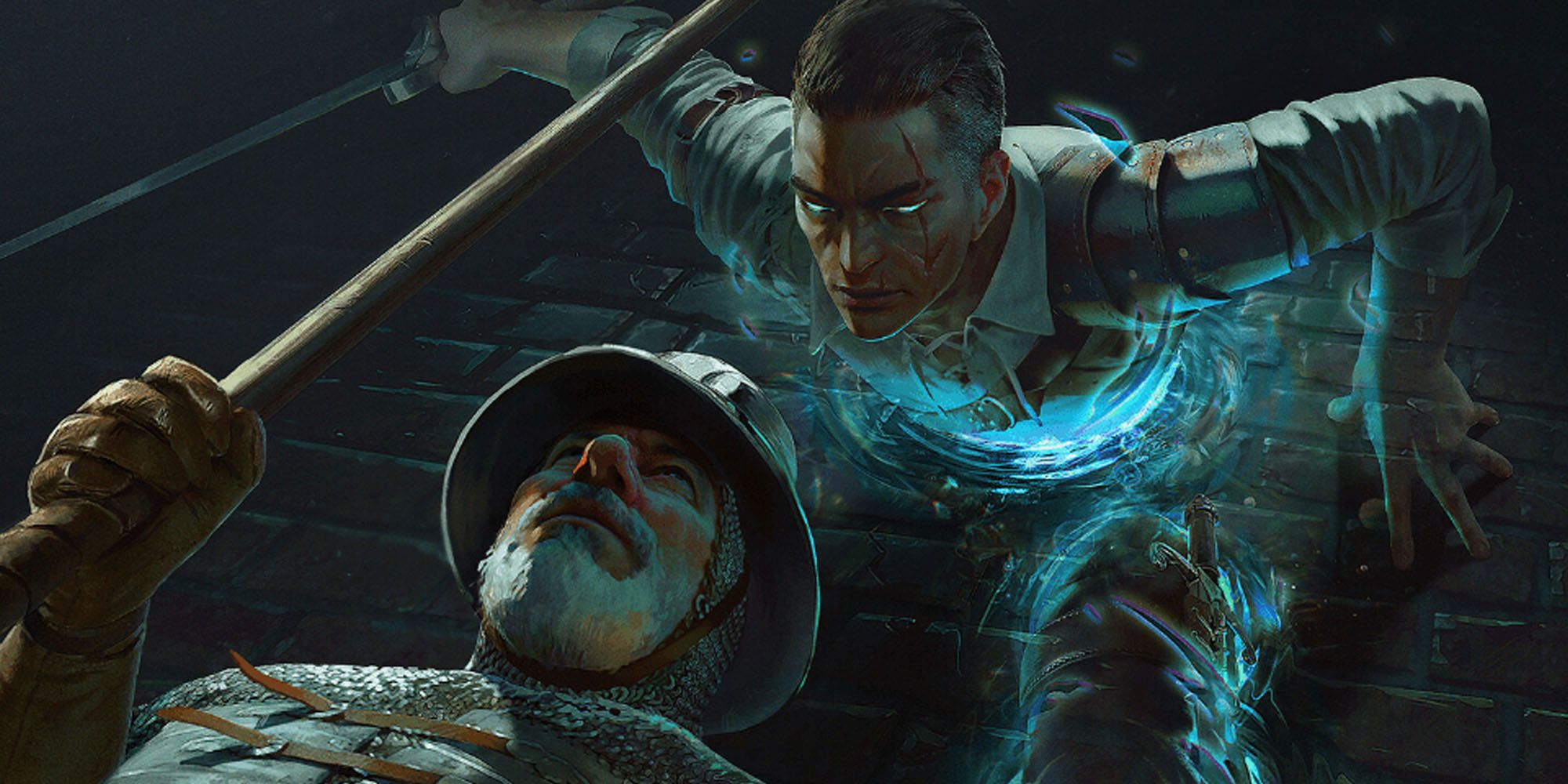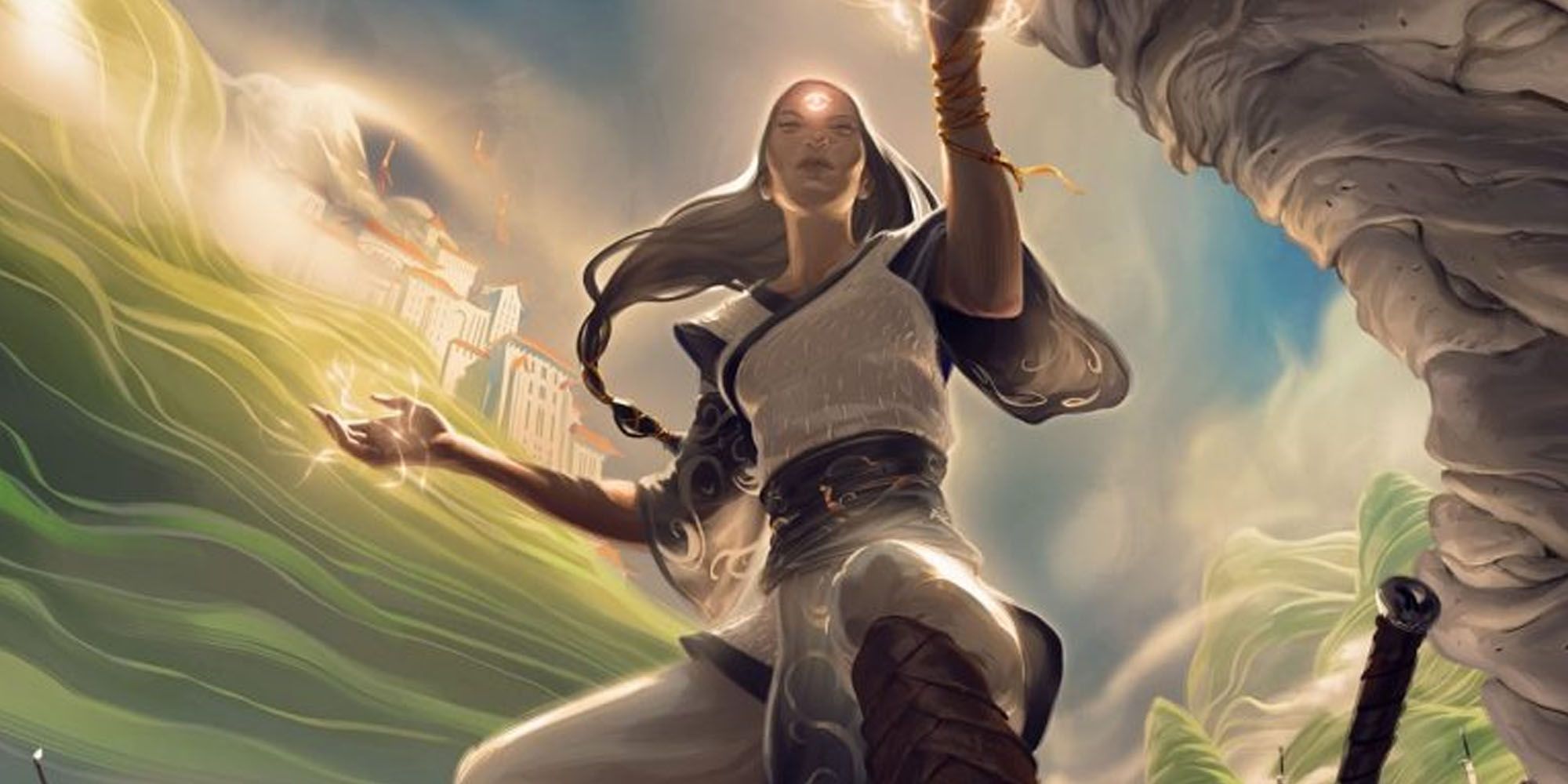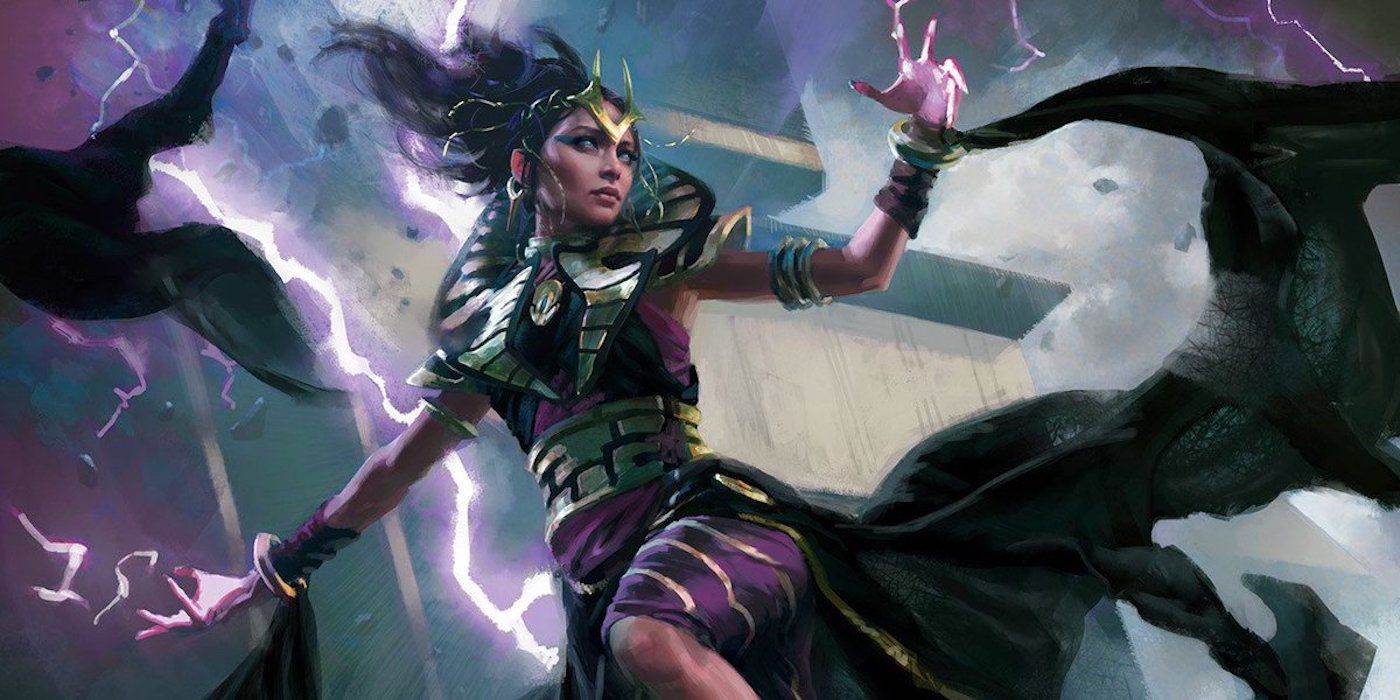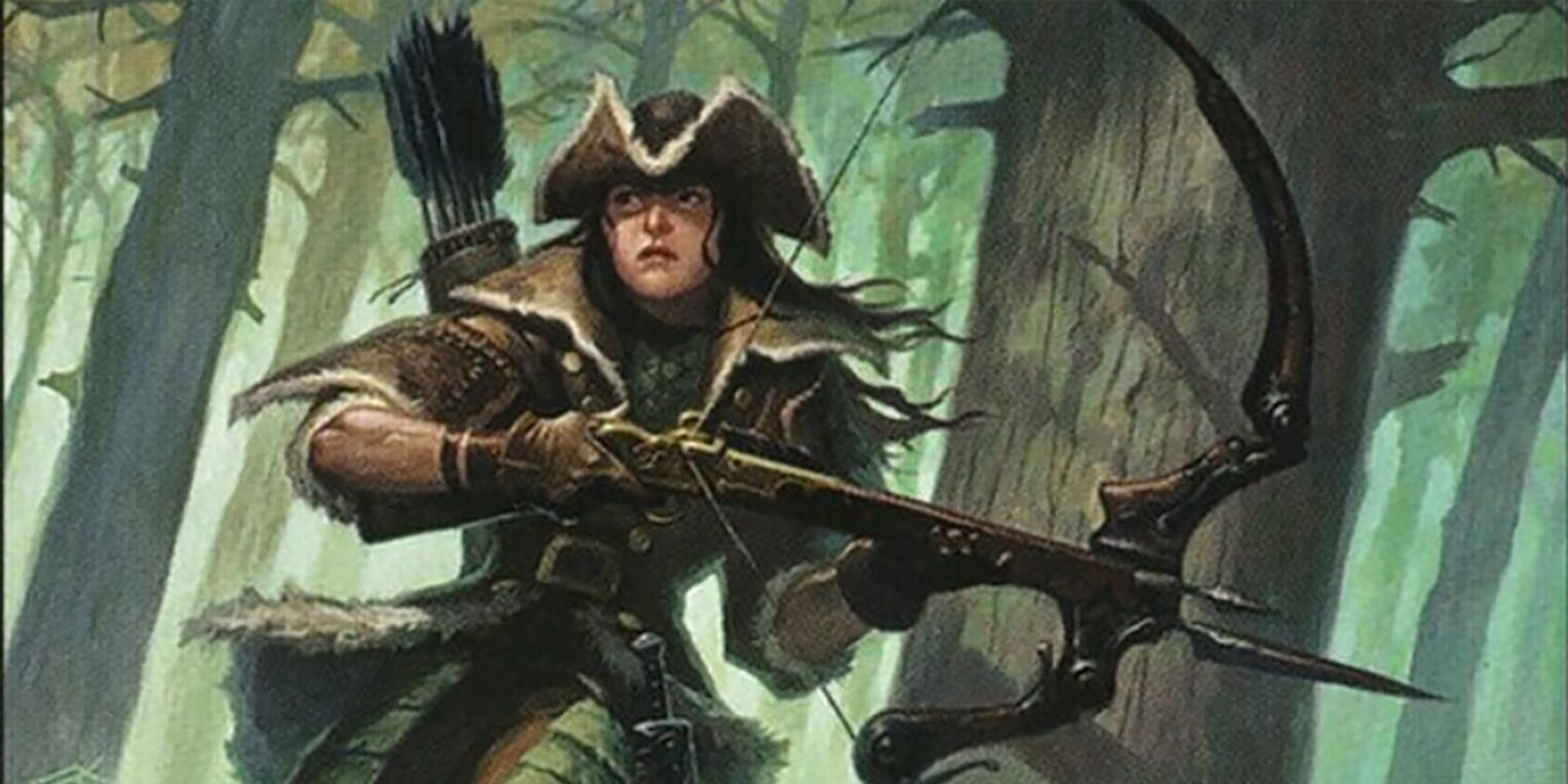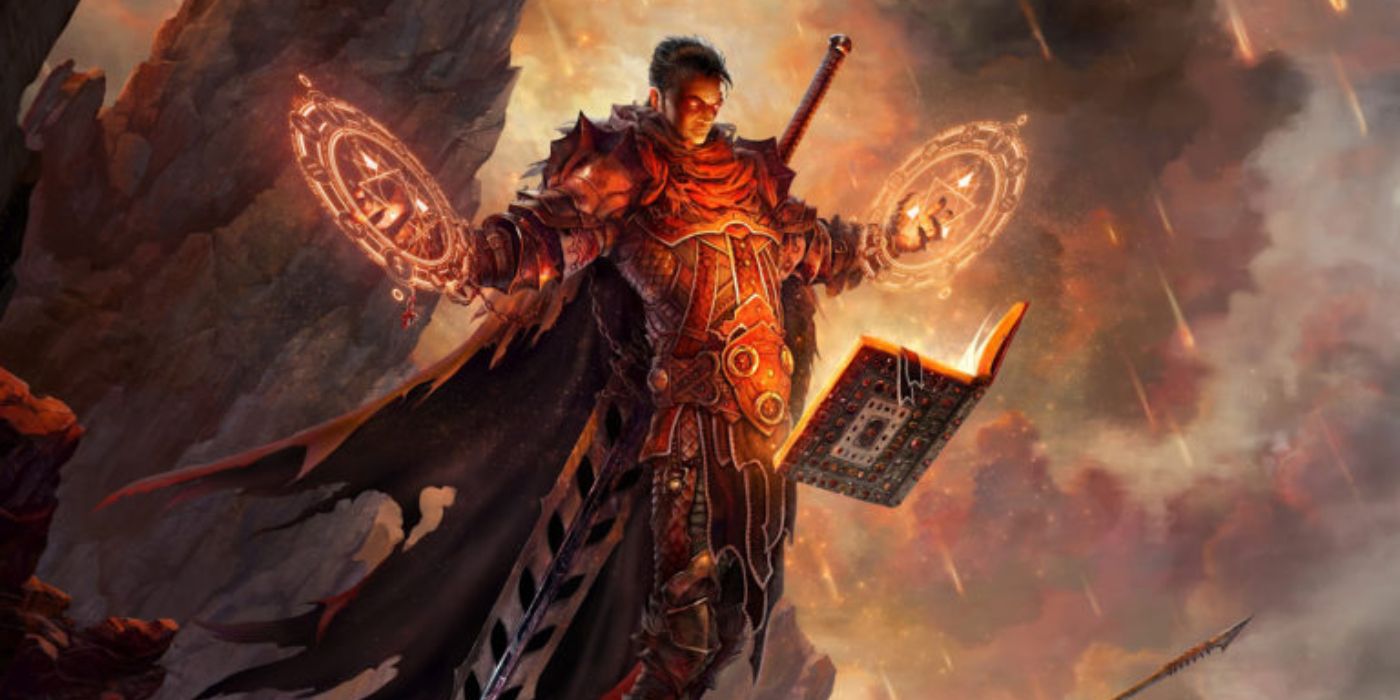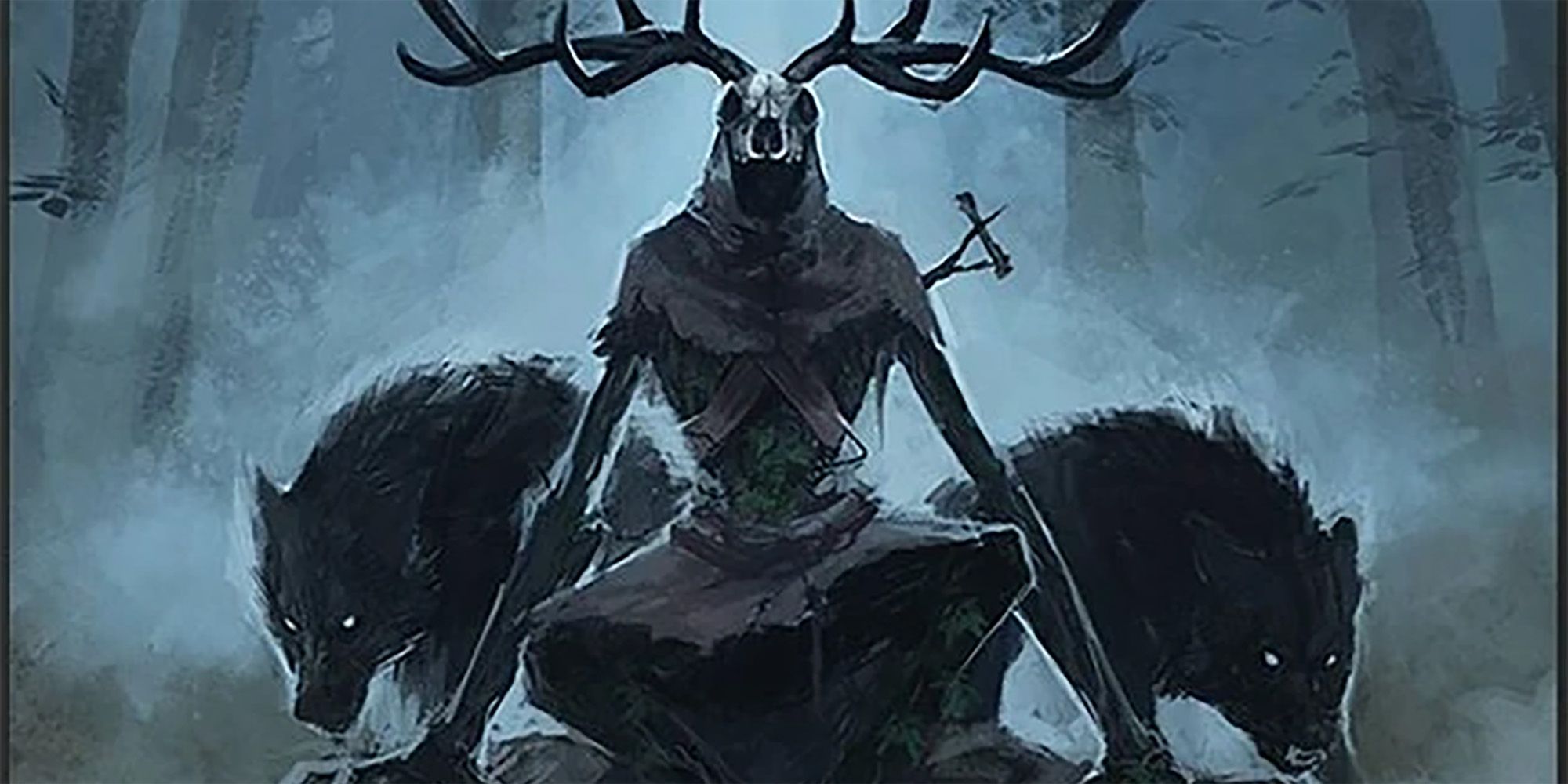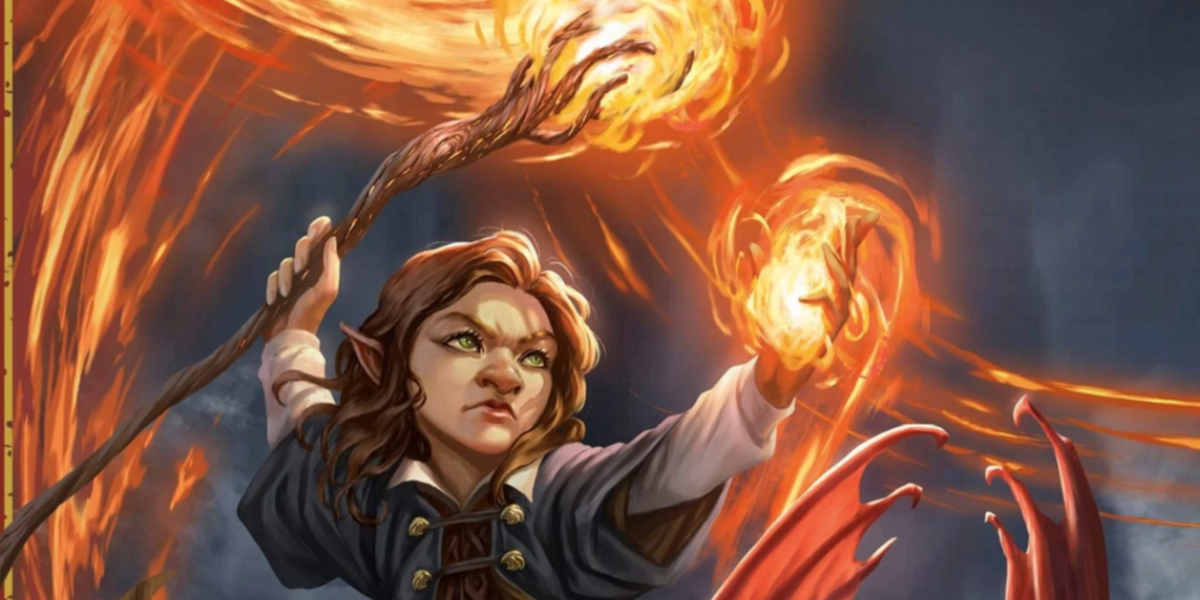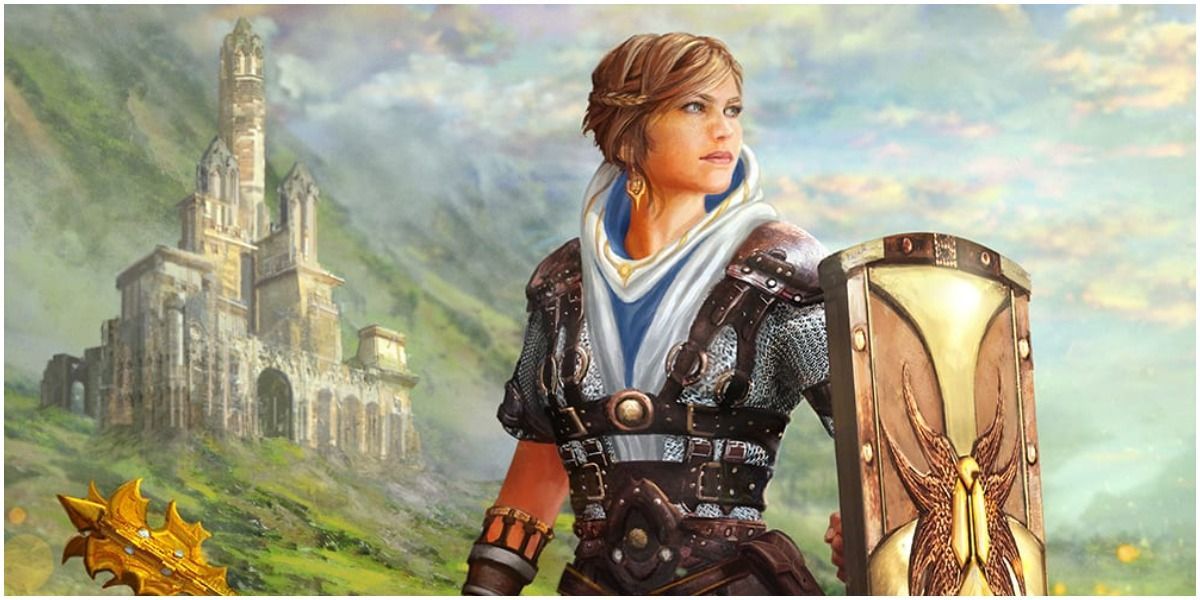Many say traditional Dungeons & Dragons gameplay has three main pillars: combat, exploration, and roleplaying. Of these, combat has the most concrete mechanics attached to it. As such, many players gravitate toward it. It's also one of the easiest metrics to rank classes on.
There are many factors that come into play when discussing just how strong a D&D class is during combat. Factors like player skill, magic items, and the campaign's specifics are impossible to account for. These can all have vast effects on particular classes. However, it's possible to make a rough comparison just by looking at a class' combat features.
Updated on January 5th, 2024 by Louis Kemner: Combat isn't the only thing in D&D 5e, but it is an integral part of many adventures. This list has been updated to adhere to CBR's current publication standards and to give even more information about the most powerful classes in D&D 5e.
13 Bards Are Meant To Support Friendly Fighters Instead
The Bard Class's Best Combat Features:
- College of Swords subclass
- Proficiencies with basic weapons like hand crossbows and rapiers
- Can learn offensive spells from other classes via Magical Secrets
- College of Swords bards can use scimitars and medium armor
The D&D bard class is a typical example of an all-rounder. Bards can do everything well, but they might lose out to a specialist in a specific area. They aren't helpless in combat, but they're held back by one factor — bards lack a way to deal significant damage without expending resources.
Bards are the only D&D class to lack significant weapon damage — barring subclasses like the College of Swords — or a high-damage cantrip. To have a particular impact in combat, they must expend spell slots or use magic items. Bards can devastate enemies with plentiful buffs and debuffs. By themselves, however, they're less of a threat than others. As a result, this is the single worst D&D class in a fight in terms of trying to quickly kill enemies. That's why bards shine as support characters, not as damage dealers.
12 Artificers Would Rather Build Weapons Than Use Them
The Artificer Class's Best Combat Features:
- Battle Smith subclass
- Proficiencies with light/medium armor and shields
The first class added to D&D Fifth Edition since its release, the artificer is a "half-caster." They have less spellcasting potential than the wizard or cleric. Other half-casters like the paladin and ranger trade out spellcasting for martial power, but the artificer gets a more unique selection of powers instead.
D&D Artificers hold their own in a fight, but their true potential lies in buffing allies and providing support. Healing, protecting allies, enchanting equipment, and casting buffs are often the most useful things an artificer can do. Depending on the subclass, D&D artificers can still deal respectable damage using either weapon attacks or buffed spells. However, they're far from the strongest D&D class for direct combat.
11 Rogues Favor Stealth And Evasion Over Damage
The Rogue Class's Best Combat Features:
- Swashbuckler subclass
- Sneak Attack
- Cunning Action for mobility and defense
- Evasion and Uncanny Dodge to avoid damage
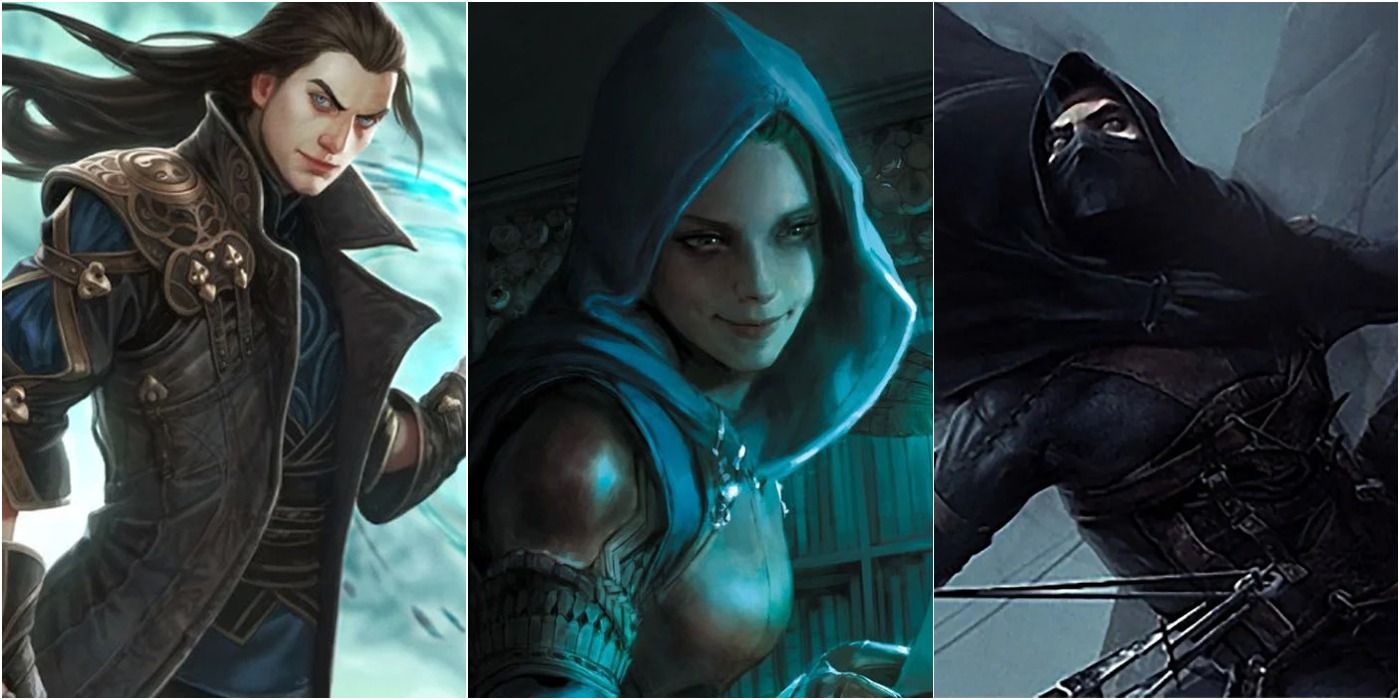
Every Rogue Subclass In D&D, Ranked
The sneakiest class in Dungeons & Dragons, rogues have several great subclasses that even further enhance their penchant for subterfuge and intrigue.Rogues bolster any party. Aside from a ludicrous number of skills and utility, they contribute in combat through their Sneak Attack. This mechanic lets rogues add an increasing number of dice to their weapon damage, but it requires them to have advantage or an ally within five feet of the enemy.
Sneak Attack isn't hard to use in D&D, but it can be less impactful than many players hope. It does let a rogue hold their own in a fight, but one high-damage attack will often do less damage than several hard-hitting attacks from another class. This disparity only increases when characters get damage-boosting magic weapons. Nonetheless, a D&D rogue can contribute well both in and out of combat.
10 Monks Excel In Bare-Handed Combat
The Monk Class's Best Combat Features:
- Way of Mercy subclass
- Unarmored Defense
- Ki Points for added combat options
- Deflect Missiles
Monks are something of a black sheep among D&D 5e's martial classes. Many players consider them one of D&D's weaker classes, but Monks excel in combat when they fulfill a specific role. Rather than standing and fighting like the D&D fighter or barbarian, the monk proves a more nimble class. They can slip past frontline enemies and attack more vulnerable foes.
Monks can do several things to their chosen targets. One thing D&D monks can do is use Stunning Strike on their target, potentially up to four times per turn. This leaves enemies helpless if they fail a Constitution saving throw. Monks can struggle with dealing damage, but they're still one of the best D&D classes for dominating fragile foes.
9 Warlocks Hit Hard With Their Limited Spells, Like Eldritch Blast
The Warlock Class's Best Combat Features:
- Hexblade subclass
- Defensive spells like Armor of Agathys for survival
- Eldritch Blast is the game's best offensive cantrip
- Hex to deal extra necrotic damage to enemies
Warlocks are unusual spellcasters to build in D&D 5e. They don't use the long rest-focused Spellcasting like other casting classes. Instead, they use the short rest-based Pact Magic. Warlocks have a smaller number of higher-level spell slots they get back more often. To complement this, warlocks gain Eldritch Blast. This is the most damaging cantrip in D&D when buffed with Agonizing Blast.
This gives the D&D warlock a source of constant high damage that other casters lack, but they fall off in other areas. Warlocks can't buff their cantrip's damage with magic weapons or feats like martial classes can with their weapons. Similarly, they get fewer powerful spells than other casters. Warlocks are the best D&D spellcaster class for reliable damage, but that's where their expertise ends.
8 Barbarians Are Tanks With Rage-Fueled Attacks
The Barbarian Class's Best Combat Features:
- Path of the Zealot subclass
- Rage to halve damage from piercing, bludgeoning, and slashing attacks, and deal extra damage
- Brutal Critical for extra damage dice
- Reckless Attack to give oneself advantage with attacks
Given the barbarian's limited out-of-combat abilities, players expect it to be the best D&D class in a straight-up fight. For a large part of the game, players are right. Barbarians have a huge number of hit points, offensive and defensive buffs from Rage, and other combat-boosting abilities like Reckless Attack. These make them one of the strongest D&D classes at lower levels.
That said, D&D barbarians begin losing effectiveness in the latter half of the game. Their damage only increases slightly, and they're stuck at two attacks when the fighter can get up to four. At the same time, other classes get wilder and more powerful abilities. A D&D barbarian never stops being useful in combat, but they fall off relative to other classes.
7 Rangers Are Fine Archers In Wild Terrain
The Ranger Class's Best Combat Features:
- Gloom stalker subclass
- Extra attack
- Fighting Styles for added combat tricks
- Favored enemy
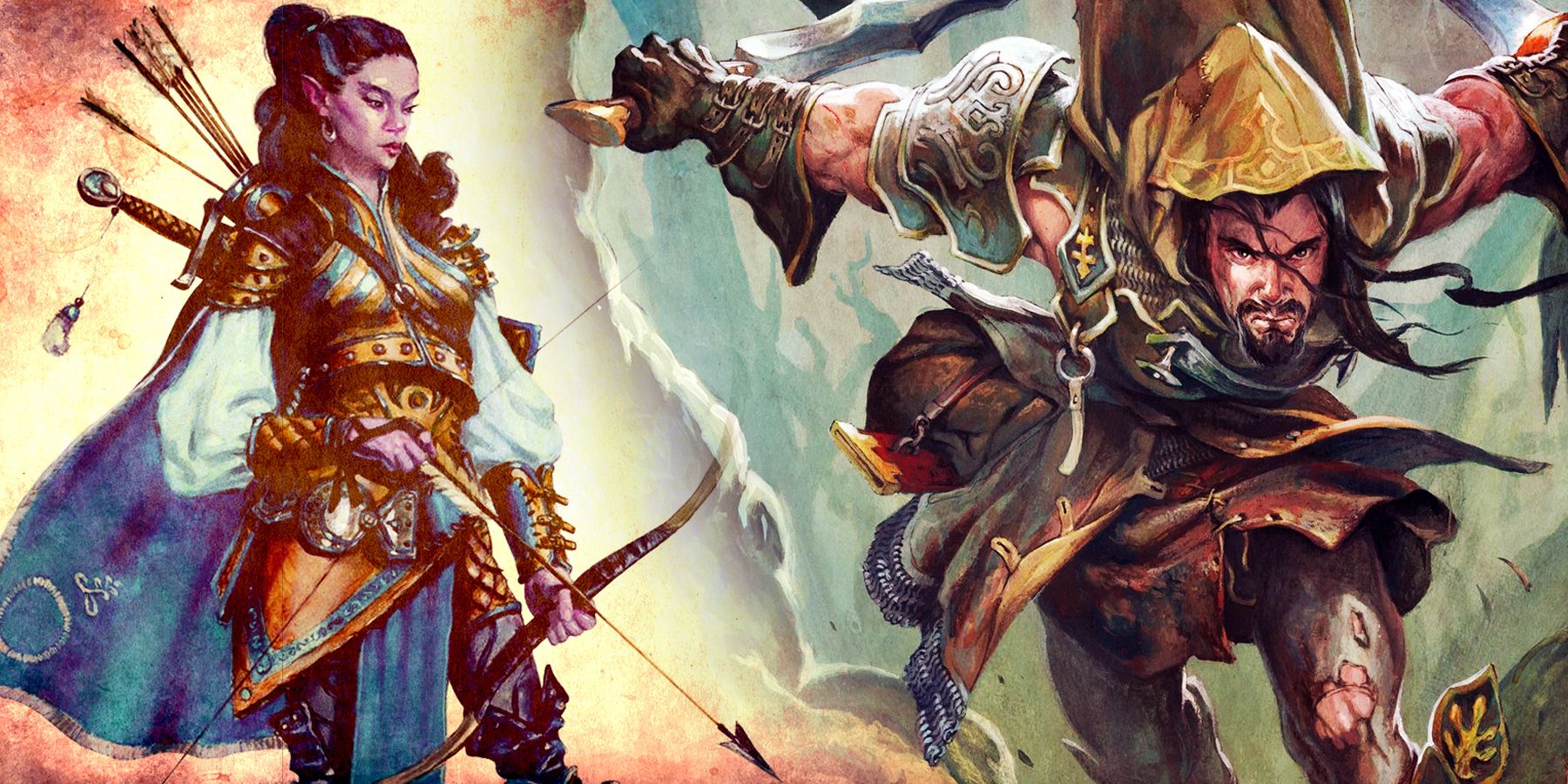
Every Ranger Multiclass Combo In D&D 5e
Multiclassing is an effective tool for enhancing a ranger's abilities in D&D, but only certain combinations yield the best results.Many fans consider rangers one of D&D 5e's weakest classes. Despite this, combat is one area where they stand up on their own. As a base class, they have a few holes. They lack any real way to increase their damage in the later game and are overly reliant on ranger-style spells. However, rangers have ways to make up for this.
Most of the ranger's D&D subclasses provide significant damage buffs, both in the early game and later on. On top of that, rangers have been buffed several times over the course of D&D 5e. In particular, Tasha's Cauldron of Everything gives them new combat abilities. A ranger remains one of D&D's most capable martial classes throughout a campaign.
6 Wizards Can Learn Potent Offensive Magic As Well As Utility Magic
The Wizard Class's Best Combat Features:
- Chronurgy Magic subclass
- Can use light crossbows as backup weapons
Wizards are undeniably one of the most flexible classes in D&D 5e. Wizards have D&D 5e's biggest spell list and the ability to prepare a huge range of magic to bring against their foes. A wizard can excel in almost anything they turn their mind to, including combat. D&D Wizards have access to many useful spells in combat, and they can deal lots of area-of-effect damage.
Alternatively, they can buff allies, debuff enemies, or move creatures around the battlefield. Wizards can struggle with dealing damage to single targets, which weapons are often better for. In addition, they have infamously low Armor Class and hit points. None of this stops them from being one of D&D 5e's strongest classes, however.
5 Druids Embrace The Savagery Of The Wild
The Druid Class's Best Combat Features:
- Circle of the Stars subclass
- Wildshape to become combat-ready animals, like bears
- Proficiencies with light/medium armor and shields not made of metal
D&D druids are a versatile and powerful class, helpful during and outside of combat, but in a fight, their abilities can get in each other's way. In particular, their powerful D&D spellcasting can conflict with a Circle of the Moon druid's Combat Wild Shape feature.
Druids are full casters, capable of casting spells that reshape the battlefield, but they can't cast while in Wild Shape, the primary combat feature of the Circle of the Moon. Other subclasses that lack this divide make for some of D&D's strongest combat characters. In particular, the Circle of the Stars can concentrate almost endlessly on powerful spells or output huge damage.
4 Sorcerers Specialize In Offensive Magic And Metamagic
The Sorcerer Class's Best Combat Features:
- Clockwork Soul subclass
- Sorcery Points to enhance offensive spells
- Can use light crossbows as backup weapons
In contrast to other spellcasters' versatility, D&D sorcerers are designed to be built as specialists, receiving a number of ways to modify and improve their spells. A player can build their sorcerer to be effective at any part of the game, including combat.
D&D sorcerers can be built to be more effective damage dealers, buffers, debuffers, or controllers than most other spellcasters, but this comes with a catch. Their abilities rely on two resources: Sorcery Points and spell slots. Running out of either leaves a sorcerer on the back foot. As long as a player can maintain these resources, however, sorcerers are one of D&D 5e's strongest combat classes.
3 Fighters Are Meant Solely For Combat
The Fighter Class's Best Combat Features:
- Battle Master subclass
- Proficiencies with all armor, shields, and simple/martial weapons
- Action Aurge for another attack
- Fighting Styles for added combat tricks
- Multiple instances of gaining Extra Attack
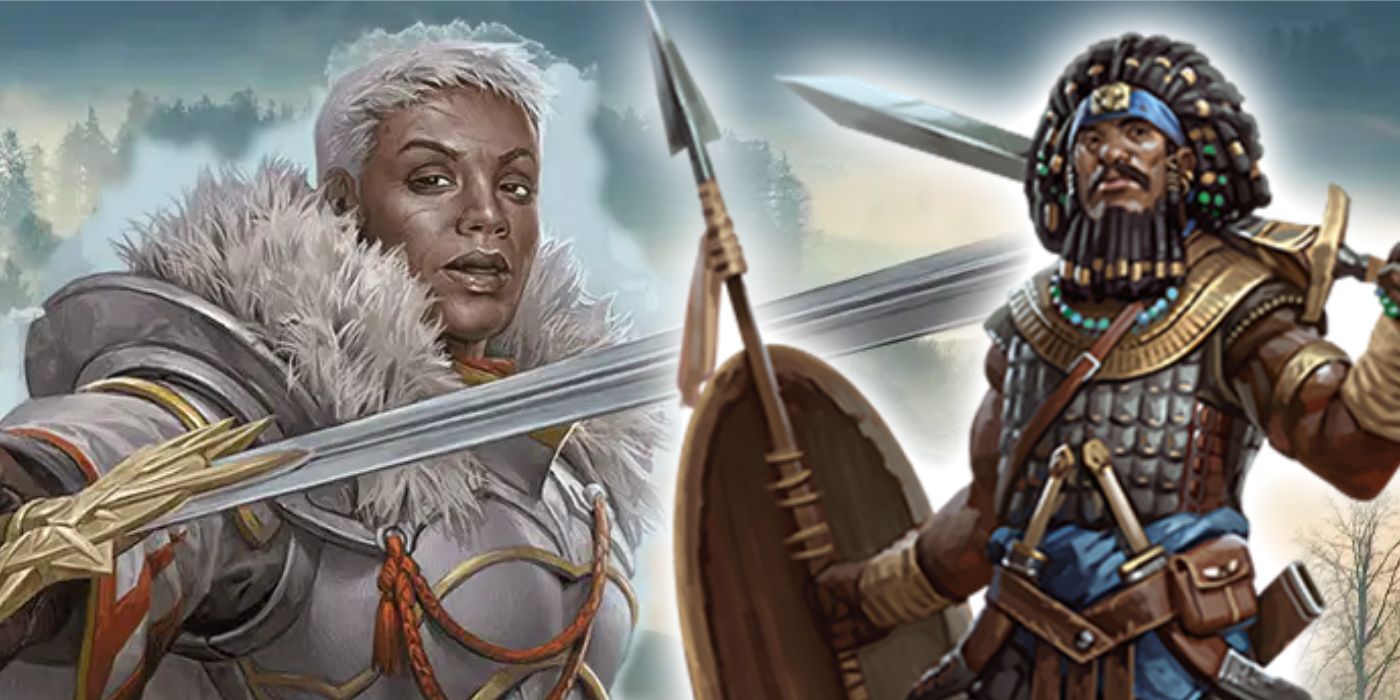
How to Roleplay a Fighter In D&D 5e
D&D fighters have a reputation for being uninspired in a roleplaying setting, but that truly doesn't have to be the case.The D&D fighter has plenty of complex and sophisticated subclasses, but the class itself is simple to play. At their base, D&D's fighters are designed to plant themselves in the middle of combat, hit their enemies hard, and take lots of damage. This simple tactic works throughout the entire game.
Fighters get the best armor, have some of the highest hit points, and make more weapon attacks than any other class in D&D. Fighters are one of the most powerful D&D combat classes at any point in the game. Their high number of attacks makes them even better when they acquire some of D&D's best magical weapons.
2 Clerics Are Tough And Smite Evil In Any Fight
The Cleric Class's Best Combat Features:
- Twilight Domain subclass
- Light/medium armor and shield proficiency
- Blessed Strikes to deal extra radiant damage
Clerics are invaluable to any D&D party. Their mechanics in older D&D editions lead many to think that clerics are only good for healing, but this is only one of many roles clerics excel at. Boasting more flexibility and power than ever before, clerics are one of the strongest and most versatile classes in D&D 5e.
D&D Clerics have access to plenty of powerful combat-related spells. Some subclasses deal buffed damage with cantrips, and others get access to D&D's best arms and armor. Clerics can hold their own on the front lines of combat or punish enemies from range. This is all on top of their powerful and flexible spell list.
1 Paladins Excel In Battle With Their Smites, Armor, Weapons, And Spells
The Paladin Class's Best Combat Features:
- Oath of Conquest subclass
- Divine Smite for added radiant damage
- Extra Attack
- Proficiency with all armor, shields, and simple/martial weapons
The paladin is perhaps the most powerful class in D&D 5e. Paladins combine the best aspects of fighters and clerics into a single character. Paladins get a fighter's weapons, spellcasting like a cleric, and several unique features. These make paladins unmatched combatants in D&D 5e.
A D&D paladin is almost always effective. They can hold their own, even if they're not built with optimization in mind. They can heal, buff, tank, and deal consistent damage. With Divine Smite, paladins can reach some of the highest damage in the game. Paladins are one of D&D's best classes in any situation, but especially in combat.
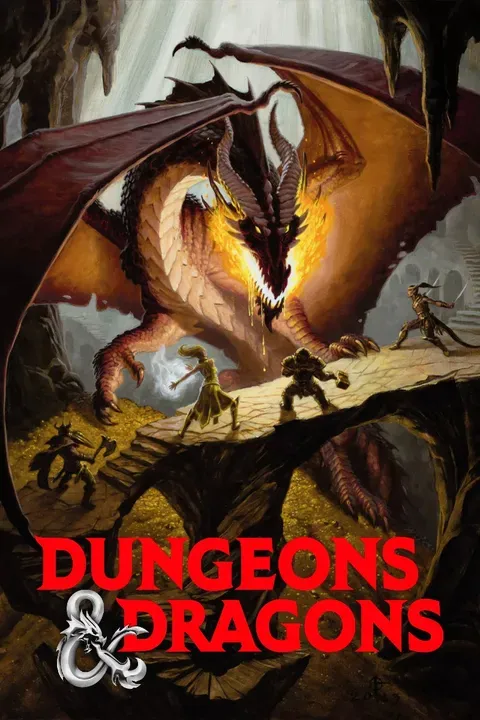
Dungeons and Dragons
A fantasy roleplaying tabletop game designed for adventure-seekers, the original incarnation of Dungeons & Dragons was created by Gary Gygax in 1974.
- Franchise
- Dungeons & Dragons
- Original Release Date
- January 26, 1974
- Publisher
- Wizards of the Coast , TSR Inc.
- Designer
- E. Gary Gygax , Dave Arneson
- Player Count
- 4-8 Players Recommended
- Age Recommendation
- 12+
- Length per Game
- 3 hours +
- Expansions
- Dungeons & Dragons 2nd Edition , Dungeons & Dragons 3rd Edition , Dungeons & Dragons 4th Edition , Dungeons & Dragons 5th Edition

